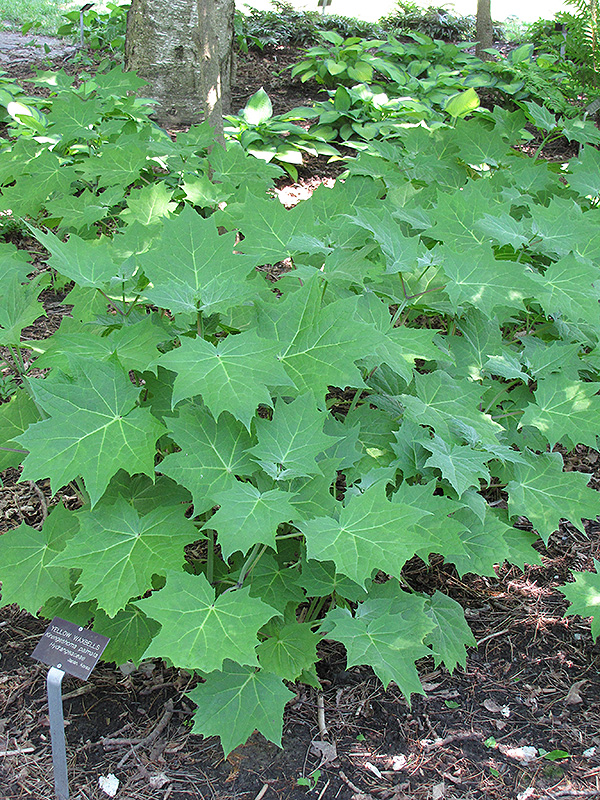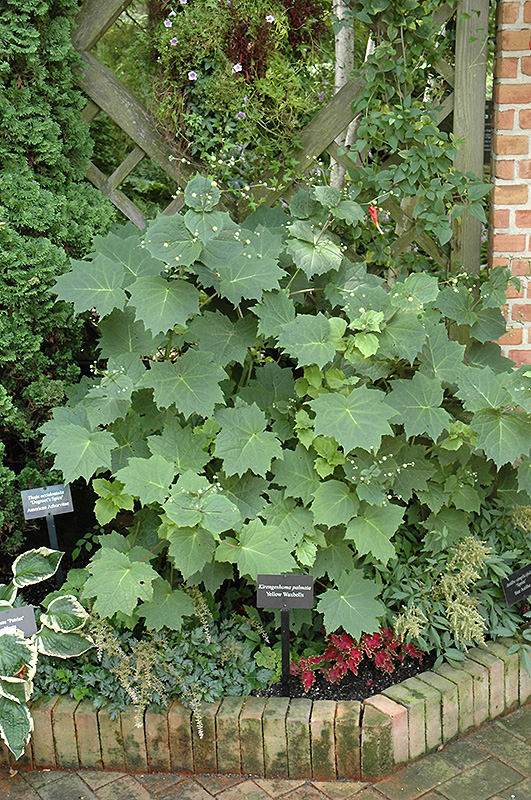Plant Finder
* This is a "special order" plant - contact store for details
Height: 3 feet
Spread: 30 inches
Sunlight:
![]()
![]()
Hardiness Zone: 4
Ornamental Features
Yellow Waxbells is primarily valued in the garden for its ornamental upright and spreading habit of growth. It features delicate spikes of buttery yellow bell-shaped flowers with orange eyes rising above the foliage from late summer to mid fall. The flowers are excellent for cutting. Its large serrated lobed palmate leaves remain emerald green in color throughout the season.
Landscape Attributes
Yellow Waxbells is an herbaceous perennial with an upright spreading habit of growth. Its relatively coarse texture can be used to stand it apart from other garden plants with finer foliage.
This is a relatively low maintenance plant, and is best cleaned up in early spring before it resumes active growth for the season. It has no significant negative characteristics.
Yellow Waxbells is recommended for the following landscape applications;
- Mass Planting
- General Garden Use
- Naturalizing And Woodland Gardens
Planting & Growing
Yellow Waxbells will grow to be about 3 feet tall at maturity, with a spread of 30 inches. It grows at a slow rate, and under ideal conditions can be expected to live for approximately 15 years. As an herbaceous perennial, this plant will usually die back to the crown each winter, and will regrow from the base each spring. Be careful not to disturb the crown in late winter when it may not be readily seen!
This plant does best in partial shade to shade. It requires an evenly moist well-drained soil for optimal growth. It is not particular as to soil type, but has a definite preference for acidic soils. It is somewhat tolerant of urban pollution. Consider applying a thick mulch around the root zone over the growing season to conserve soil moisture. This species is not originally from North America.
* This is a "special order" plant - contact store for details







